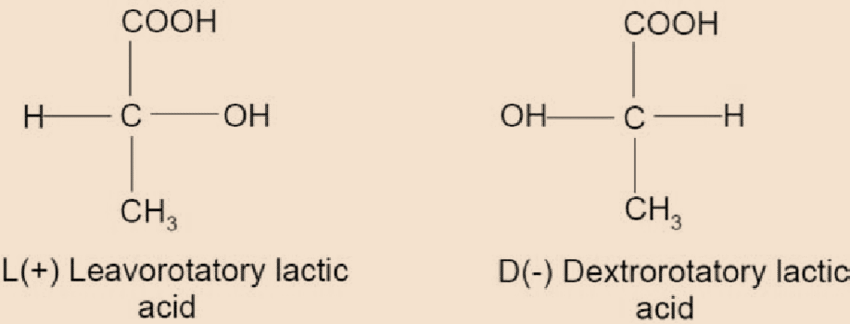
Answer
444.3k+ views
Hint: Enantiomers are a pair of molecules that exist in two forms that are mirror images of one another but cannot be superimposed one upon the other. They are basically non-superimposable mirror images of one another.
Complete step by step solution:
- An enantiomer can be defined as one of the two stereoisomers of a compound that is a non-superimposable mirror image of another stereoisomer of the same compound.
- Moreover, the chemical compounds that exhibit stereoisomerism and have multiple enantiomeric structures are known to often participate in chemical reactions with other enantiomeric compounds.
- Further, lactic acid is an organic acid with chemical formula ${C_3}{H_6}{O_3}$. It is also known as milk acid and it further consists of two enantiomers. The first enantiomer is \[L\left( + \right)\] lactic and the second enantiomer is \[D\left( - \right)\] lactic acid. Both the enantiomers are as shown:

Moreover, enantiomers can be classified as special types of optical isomers. It is important to note that two enantiomers of a compound must be non-superimposable. Each of the possible structures is known as enantiomorph. Hence, the structural property of a chemical compound that allows it to have two different possible enantiomorphs is known as enantiomorphism.
Note: Many biological molecules are known to be enantiomers. Two different enantiomers of the same chemical compound can have completely different effects on many organisms. This phenomenon is widely observed in the effects of different drugs on human beings. In most cases, only one enantiomer of a drug will have the ability to bring about the desired physiological change whereas the other enantiomer is often not as active.
Complete step by step solution:
- An enantiomer can be defined as one of the two stereoisomers of a compound that is a non-superimposable mirror image of another stereoisomer of the same compound.
- Moreover, the chemical compounds that exhibit stereoisomerism and have multiple enantiomeric structures are known to often participate in chemical reactions with other enantiomeric compounds.
- Further, lactic acid is an organic acid with chemical formula ${C_3}{H_6}{O_3}$. It is also known as milk acid and it further consists of two enantiomers. The first enantiomer is \[L\left( + \right)\] lactic and the second enantiomer is \[D\left( - \right)\] lactic acid. Both the enantiomers are as shown:

Moreover, enantiomers can be classified as special types of optical isomers. It is important to note that two enantiomers of a compound must be non-superimposable. Each of the possible structures is known as enantiomorph. Hence, the structural property of a chemical compound that allows it to have two different possible enantiomorphs is known as enantiomorphism.
Note: Many biological molecules are known to be enantiomers. Two different enantiomers of the same chemical compound can have completely different effects on many organisms. This phenomenon is widely observed in the effects of different drugs on human beings. In most cases, only one enantiomer of a drug will have the ability to bring about the desired physiological change whereas the other enantiomer is often not as active.
Recently Updated Pages
What happens when dilute hydrochloric acid is added class 10 chemistry JEE_Main

What is the meaning of celestial class 10 social science CBSE

What causes groundwater depletion How can it be re class 10 chemistry CBSE

Under which different types can the following changes class 10 physics CBSE

Article 46 of the Constitution of India refers to the class 10 social science CBSE

Which of the following sentences has a linking verb class 10 english CBSE

Trending doubts
Which are the Top 10 Largest Countries of the World?

How do you graph the function fx 4x class 9 maths CBSE

Fill the blanks with the suitable prepositions 1 The class 9 english CBSE

Difference between Prokaryotic cell and Eukaryotic class 11 biology CBSE

The Equation xxx + 2 is Satisfied when x is Equal to Class 10 Maths

Why is there a time difference of about 5 hours between class 10 social science CBSE

Differentiate between homogeneous and heterogeneous class 12 chemistry CBSE

What is pollution? How many types of pollution? Define it

Give 10 examples for herbs , shrubs , climbers , creepers




